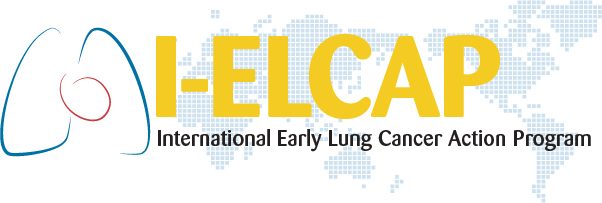Previous Meetings
The 14th International Conference on Screening for Lung Cancer
Friday, April 21, 2006 to Sunday, April 23, 2006
Community and Professional Education Center – Holy Cross Hospital
Silver Springs, MD
United States
Agenda: 14th Conference Agenda
Mission:
The broadest mission of these Conferences is the collective pursuit of the issues surrounding screening for lung cancer, the main subissues being early diagnosis and early intervention. Any given Conference focuses on issues that are particularly topical at the time, including updates of research on and development pertaining to screening for lung cancer and related topics.
Initially the focus was on diagnostic research, leading to updates of the regimen of screening and understanding of its performance characteristics. The prognostic research has thus far addressed the effectiveness of lobectomy for treatment of Stage I cases diagnosed as a result of CT screening. Given the high curability of these Stage I cases, second primaries will occur frequently, so that lung-sparing treatments are of increasing importance and the more recent Conferences have started to focus on this issue. The ultimate goal of this collaboration has been to develop the knowledge base for individualized decision-making by the person considering screening.
Like previous ones, this Conference will address scientific and technologic advances and their potential incorporation into the continually updated I-ELCAP screening regimen. The focus is now on evaluation of treatment alternatives, potential treatment trial designs, and continued development of the knowledge base for individualized decision-making.
Consensus Statement:
While the previous Conferences have focused updates of the screening regimen and determining its performance characteristics and recently on the effectiveness of lobectomy in the treatment of Stage I screen-diagnosed cases, this Conference focused on potential treatment trials to assess the effectiveness of alternative treatments of these. Given the high curability of these cases and their subsequent high risk of second primaries, their lung-sparing treatments are of importance.
Progress reports on the ongoing screening trials in Denmark, Holland/Belgium (NELSON), Italy (ITALUNG), US (NLST) were presented. Also, the Cancer Intervention and Surveillance Monitoring Network (CISNET) funded by the National Cancer Institute, presented its development of population models of lung cancer screening and its desire for collaboration with screening programs.
As for I-ELCAP, the updated I-ELCAP protocol no longer involves the use of single-slice CT scanners as multi-slice CT scanners allow for a more efficient regimen of screening and also provide better diagnostic information about the lungs and about coronary calcifications besides. Biomarker studies continue to confirm that the screen-diagnosed cancers are indeed genuine cancers. The 10-year survival rate in Stage I cases treated with limited resection is high, and this makes limited resection a viable option for Stage IA cancers, particularly those presenting as nonsolid nodules. The 10-year survival rate is high also in cases of multiple adenocarcinomas without lymph node metastases, indicating that these cases should be classified as Stage I cases of separate primaries.
Other plenary presentations addressed for one, promising scientific and technologic advances as for the visualization and biopsy of lesions in very peripheral airways, automated ‘micro-tomography of cells, including their nuclear morphology, providing for their classification as to malignancy, and noninvasive identification of soft plaque in the coronary arteries. As for treatment, dilemmas encountered in the context of screening were outlined, and results of alternatives to surgical resection – radiotherapy, percutaneous cryotherapy, radio-frequency and microwave treatments – were reported. These studies have been quite limited in scope, but cooperative group trials are now starting to be developed in the US and Japan. The usefulness of registry information in evaluating alternative treatments was illustrated.
Two workshops were held. One of these addressed the potential of I-ELCAP as a network of collaborating institutions to engage in treatment evaluations. The identified strengths include its focus on a single disease and the involvement of multi-disciplinary experts who have been collaborating on protocol development and implementation as well as results reporting. I-ELCAP also has a unique web-based electronic infrastructure which guides protocol implementation, quality assessment, and allows transmission of images for expert and automated assessment of tumor growth and regression. Furthermore, it is the only collaborative group in the US that is continuing to provide CT screening for lung cancer. It was recognized that for I-ELCAP to be effective in treatment research, it must expand to include individuals with expertise in the various treatment modalities and regulatory issues.
The other workshop considered the feasibility of joint pulmonary and cardiac screening given the potential of the latest CT scanners. Current practice in CT angiography of the coronaries involves imaging that excludes the lung apices, lung bases, and right lung periphery. But as smoking is a risk factor for coronary atheromatosis as well as lung cancer, we plan to perform low-dose CT of the heart as well as the lungs. Following the I-ELCAP paradigm of evaluation, we will first develop and evaluate the diagnostic regimen for identifying soft plaques in the coronary arteries and then assess the prognostic implications of the identified pattern of soft plaques. We hope that demonstration of the strengths of such a combined screening will encourage the development of scanners better suited for it.
